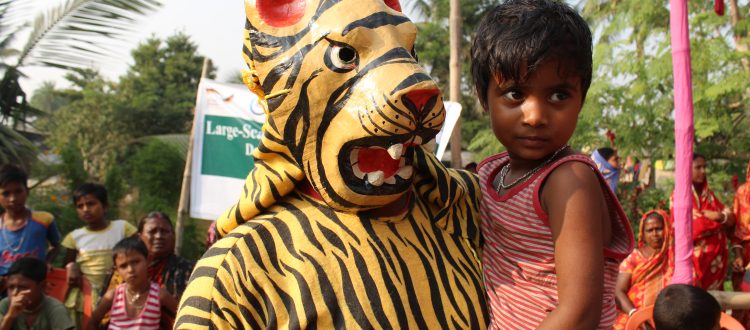Games for Conservation – Conflict mitigation in the Sundarbans
Wildlife Trust of India in partnership with the Wild Team & Jahangirnagar University, Bangladesh, Lokamata Rani Rashmoni Mission (LRRM), KFW, International Union for Conservation of Nature (IUCN) and the West Bengal Forest Department has launched the Sundarbans Project in numerous phases. The main objective of the project is testing out various initiatives to reduce human-tiger conflict, reduce people’s dependence on forests and spread awareness in the Sundarbans across India and Bangladesh, such that successful measures can be replicated across a larger landscape in a subsequent extension of this project.
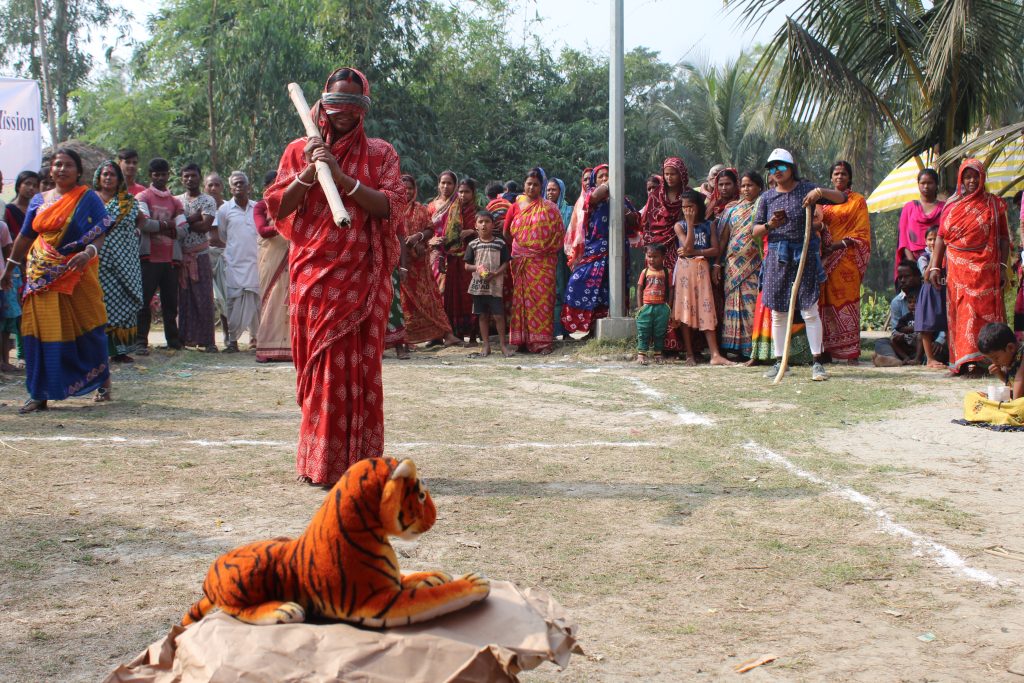
Games for Conservation: Break the Pitcher | Photo by Samrat Paul/WTI
One of the main objectives is to spread awareness among the local people who are forest resource dependent. The first two outreach programmes were organised in two hamlets Naiyya Para & Naskar Para in Deulbari-Debipur G.P, Kultali Block.
“As our project area is new to the idea of tiger conservation or conservation in general, we opted for a soft approach to raise conservation awareness through outreach programmes. We came up with activities and games that the locals are familiar with and have acceptance among them. We wanted all age groups to participate in the programmes and get them connected to the idea of conservation. We attached conservation messages with each activity and game of the outreach programmes.” says, Prosenjit Steel, Officer-in-Charge of the project.
The first programme was conducted on the 11th of December in Naiyya Para hamlet and the second event was conducted on the 13th of December in Naskar Para hamlet.
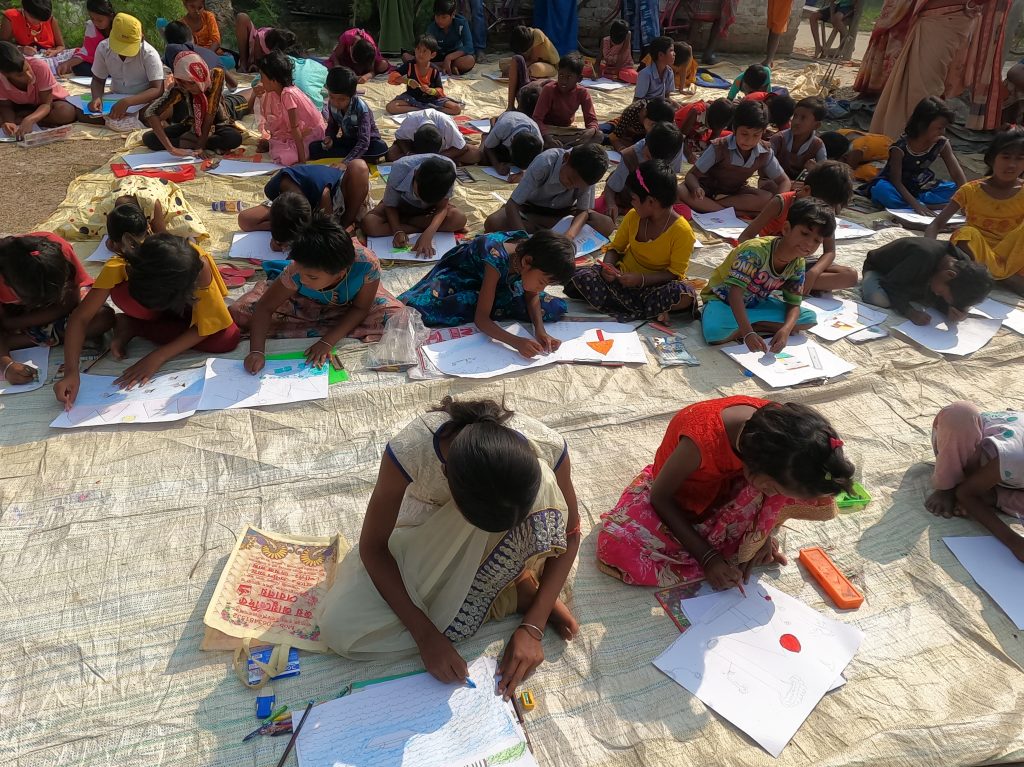
Games for Conservation – Drawing Competition | Photo by Prosenjit Steel/WTI
Drawing competition- The drawing competition was held for the children of standards I-IV falling in Group-A and Group-B consisted of students from standards V-VIII. The topics for the drawing competition for group-A was ‘Your Village Landscape’ and for Group-B was- ‘Your Sundarbans’. A total of 88 children participated over the two-day event.
Hit the wicket- This was the second event of the day where adults and children participated. There were three wickets that were being fixed on the ground, the first wicket was of the tiger, the second was of the deer and the third was a standard wicket. The game organizing team asked the participants to hit the wicket which they think appropriate using their personal judgment. The idea behind this game was to understand their perceptions towards the Tiger and Deer. Total 59 people participated in this event on the the first day and 73 people on the second.
Put the ball in the Basket- This was the third event of the day where both male and female participants took part. Two baskets were set up; one of the baskets was marked as the forest and the other basket was of the village. The participant who threw the ball in the forest basket would be out of the game and the ones who threw the ball in the village basket would win. The main objective of the game was to make them understand that it was wise to stay in the village and not go inside the forest which has potential risk to their lives A total of 95 participants took part.
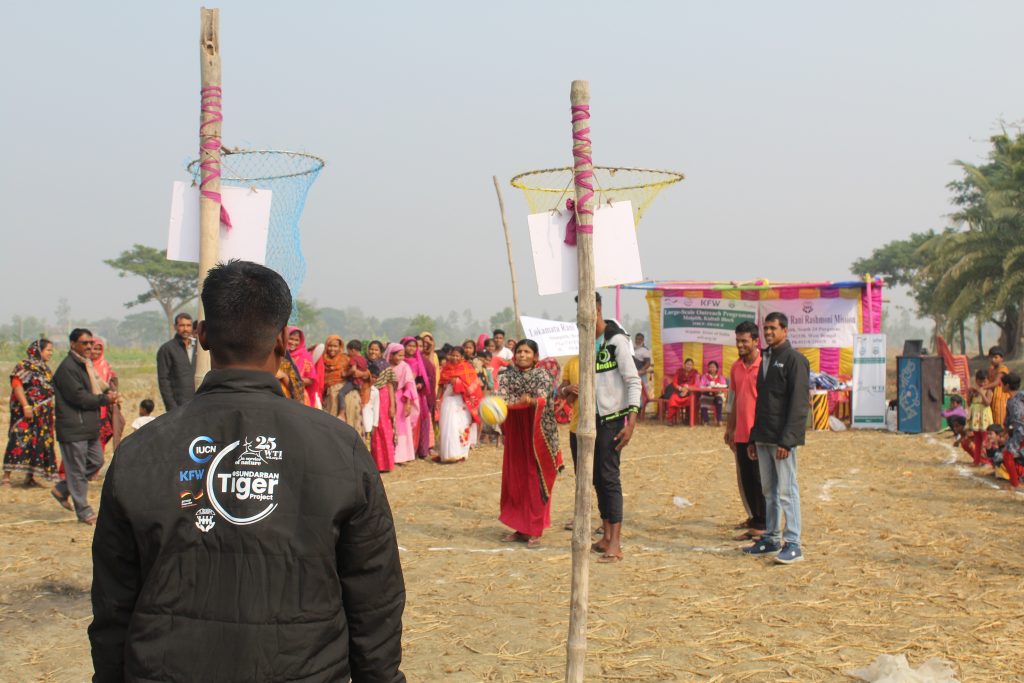
Games for Conservation – Ball in the Basket | Photo by Prosenjit Sheel/WTI
Break the pitcher- This was the fourth event of the day where there were two pitchers kept; on top of one pitcher a tiger toy was kept and the other pitcher was empty. The participants were required to hit the empty pitcher for positive points and if they hit the pitcher with a tiger on top of it would get negative points. This game was conducted to just make participants and the larger audience that hitting the pitcher with tiger on top of it is a negative action and fetches negative points. In this game, a total of 30 women participated on the first day and 30 women participated on the second.
Musical Chair- This was the fifth event of the day in which only women had participated. There were 24 participants on the first day and 30 participants on the second. This musical chair was little different than the usual as some of the chairs had negative/positive interactions placards fitted with them. The rule of the game was that if any woman sits on those chairs with negative interactions with forest message placards, they would be disqualified. Few negative interactions with forest were- prawn seed collection, catching fish with small nets, forest dependency for resources, etc. The participants played the musical chair smartly and they largely avoided the chairs with the negative interactions with forest placards.
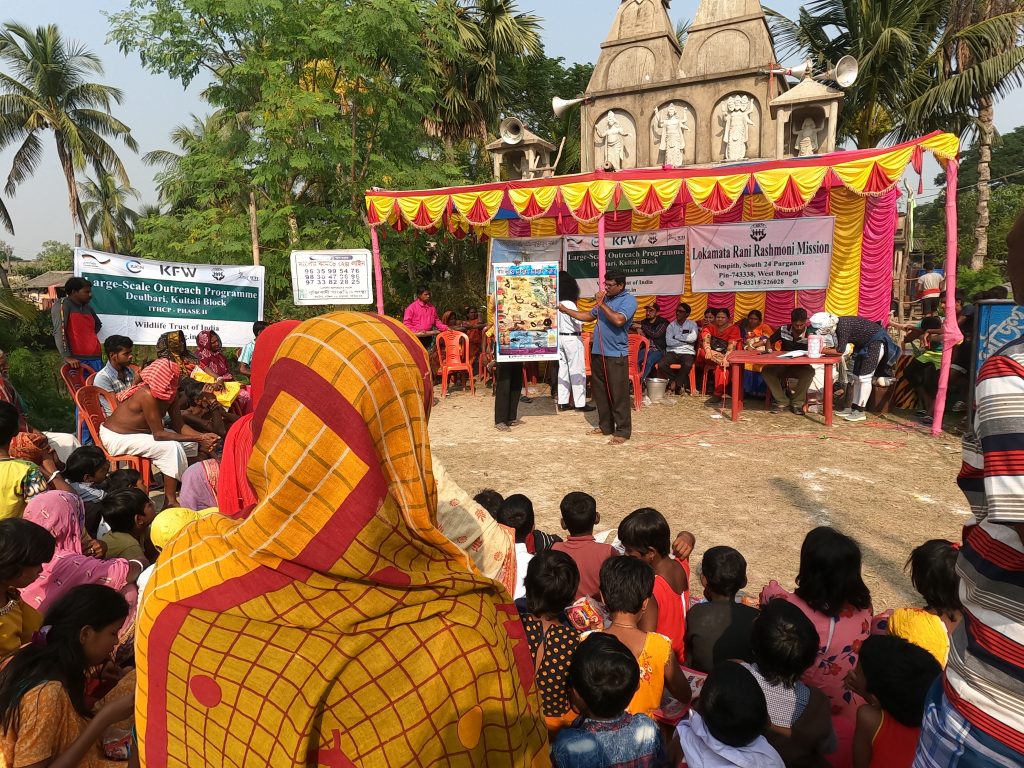
Session of co-existence with snakes | Photo by Prosenjit Sheel/WTI
In addition to the above events, the team had also arranged a puppet show where the puppet narrated the entire story on the need of reducing forest dependency and benefits of opting for alternative livelihood options. A snake awareness workshop was also arranged where a team of snake experts explained the important role snakes play in our lives. The trainers also requested the villagers to seek proper medical assistance for snakebite cases and not to go to any local healer.
The programs conducted in Deulbari village saw huge participation from the villagers, especially our project beneficiaries. The events provided a platform for the women folks to come out and take time off from their daily routine and have fun together through the games. The way the games were played by the participations showed us that they do understand the aspects of positive and negative interactions with forest. The participants not hitting the wicket marked with Tiger and Deer reflects their positive attitude towards the tiger and deer. In the ‘put the ball in the basket’, the participants aimed for the basket marked with ‘village’, and none of the participants aimed for the basket with jungle marked in it. This shows that they understand that it is safer to be in the village rather than go inside the forest which has risks of getting attacked by tigers or crocodiles.
The common villagers and our project beneficiaries, especially women have requested us to organise events such as this as they enjoyed all the activities and it also gave their children to showcase their talents through drawing competition and others games in the outreach programmes.

